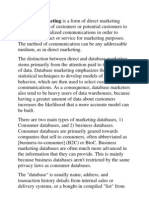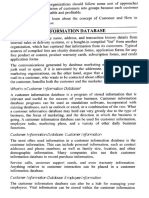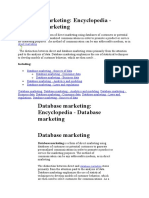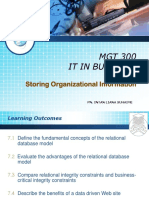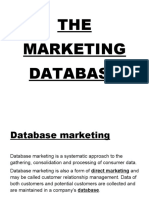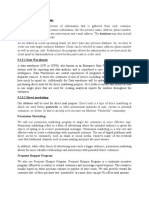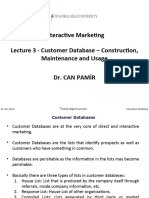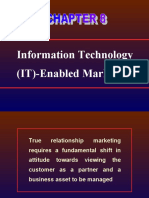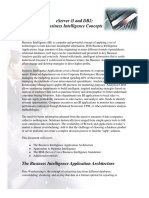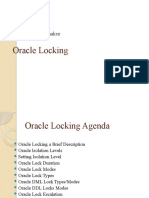0% found this document useful (0 votes)
167 views4 pagesCustomer Database Is
A customer database is a collection of customer records stored electronically that allows a business to organize customer information for marketing and sales purposes. It provides benefits like identifying customer trends, generating targeted communications, and monitoring sales performance. A consulting firm can help businesses develop a customized customer database, starting with a basic system and expanding it over time to make it a more powerful marketing tool.
Uploaded by
Smriti OjhaCopyright
© Attribution Non-Commercial (BY-NC)
We take content rights seriously. If you suspect this is your content, claim it here.
Available Formats
Download as DOCX, PDF, TXT or read online on Scribd
0% found this document useful (0 votes)
167 views4 pagesCustomer Database Is
A customer database is a collection of customer records stored electronically that allows a business to organize customer information for marketing and sales purposes. It provides benefits like identifying customer trends, generating targeted communications, and monitoring sales performance. A consulting firm can help businesses develop a customized customer database, starting with a basic system and expanding it over time to make it a more powerful marketing tool.
Uploaded by
Smriti OjhaCopyright
© Attribution Non-Commercial (BY-NC)
We take content rights seriously. If you suspect this is your content, claim it here.
Available Formats
Download as DOCX, PDF, TXT or read online on Scribd
/ 4
